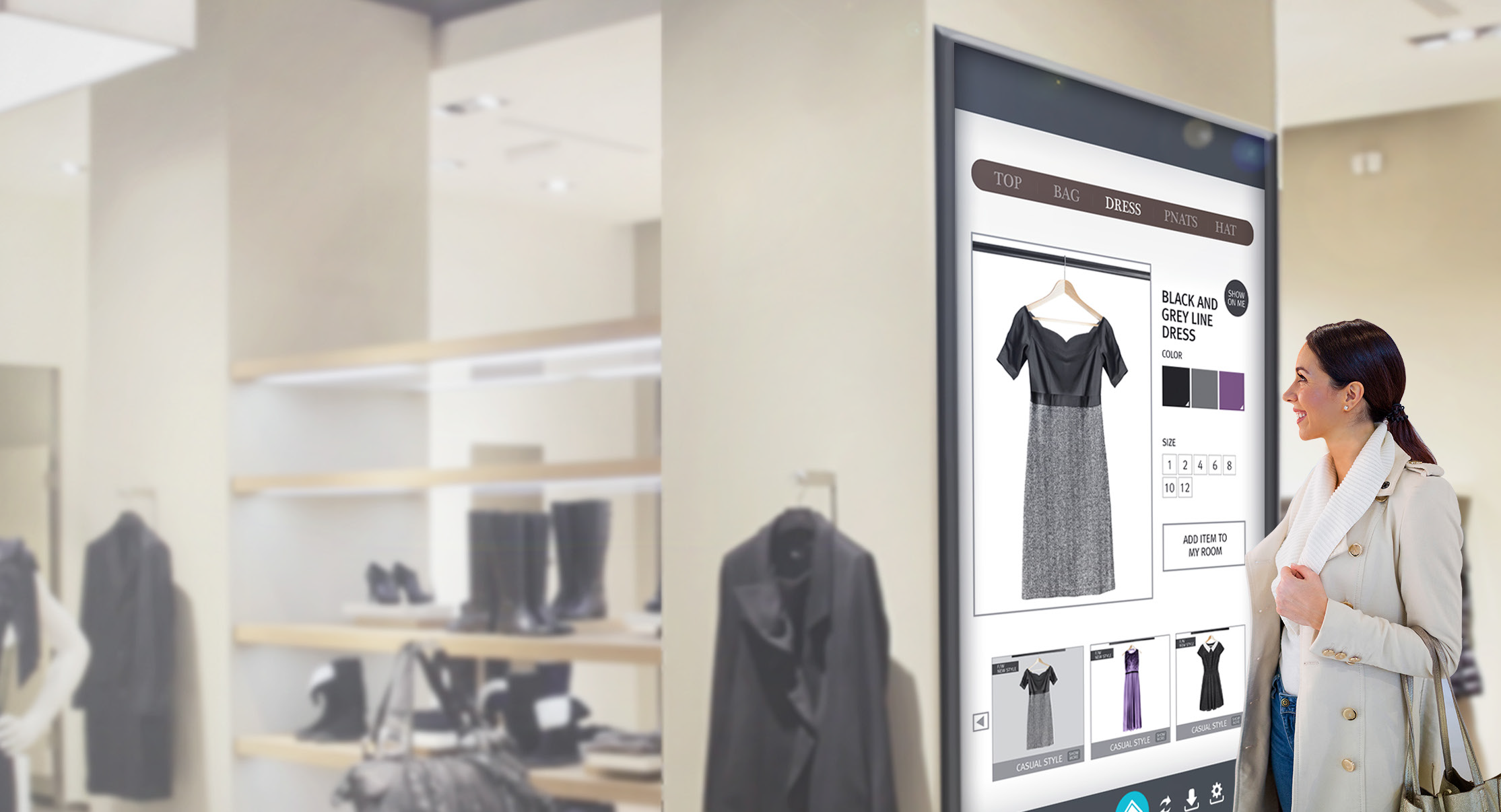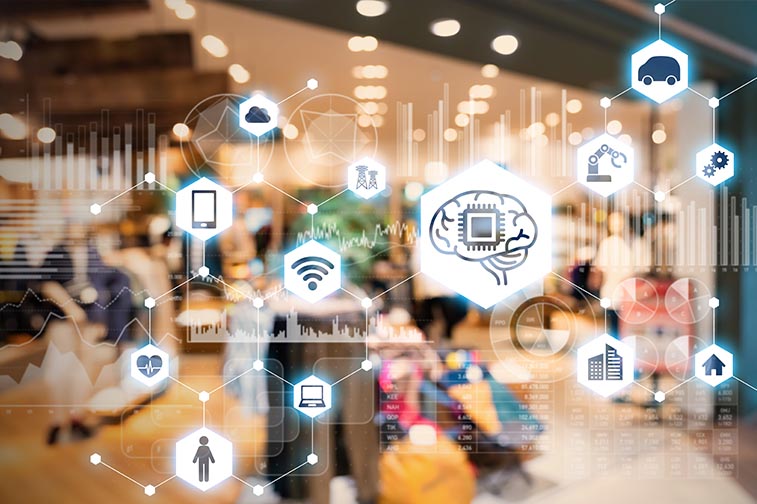
Brands are always looking for ways to strengthen relationships with their customers. Reaching customers, especially with all of the noise in today's advertising atmosphere, can be difficult. While it nice to try and reach consumers in their home, when they are watching TV or surfing the internet, it can be difficult to hold people’s attention in these settings as well. This, among other reasons, is why brands incorporate out-of-home (OOH) advertising into their campaign strategy. Out-of-home media companies focus on reaching customers when they are on the move or in a holding pattern – situations that create highly receptive, captive audiences.
Today, the delivery of these messages is more nimble and contextual. With the integration of digital technology into out of home advertising, advertisers no longer wield a mere selling tool; they now leverage those tools to increase interaction with their audience in a way that strengthens relationships and drives conversions. Since the integration of digital technology into the OOH space, rapid scheduling and optimization of advertising is now possible. Nearly $4.5 billion is expected to be spent on DOOH advertising in the U.S. by 2019, an increase of approximately $1.2 billion from 2016. Further, it is predicted that DOOH advertising revenues will overtake traditional media spend in 2020, growing at a rate of 15% a year for the next four years.
Let’s examine the forces that are transforming this unique advertising ecosystem to usher in a new era of DOOH (Digital Out-of-Home Advertising).
1. Convergence of Mobile and DOOH
The DOOH industry is investing substantial capital in connecting their digital signage to the mobile customer. Technology that integrates Bluetooth, beacons, and location-based services is gaining more and more significance in for marketers everywhere. The reason is mobile activation. DOOH marketing initiatives are utilizing mobile geo-fencing in order to extend the reach of campaigns via the mobile device, thereby exposing the customer to advertisements longer. One Nielsen study found that 71% of digital billboard viewers find those ads to stand out more than online ads. The ability of signage to garner audience attention is incentivizing advertisers to move from traditional OOH platforms to DOOH platforms.
2. Interactive Displays
Screens are no longer just displays; they are interactive data collection points that can collect demographic information that will help advertisers better understand their target audience, buying groups, and behavior patterns of their shoppers. Interactive screens provide brands the most accurate and transparent ROI framework because they can determine when, where, and how audiences are interacting with the screen and adapt to serve up creative campaigns. Sensors on screens can also detect performance issues with the display, allowing for automated, efficient servicing of kiosks and displays.
Such an interaction creates an immersive experience that allows for better audience measurement. Nielsen cites that OOH media is capable of driving more online activity per ad spend than any other offline medium, by connecting to social media and mobile technologies like Augmented Reality (AR) and QR codes. That's why the industry authority for audience measurement and Geo-Path is teaming up with QDot and City Data for better audience measurement.
3. Programmatic Buying
The term 'programmatic' refers to the automation of workflows based on data-driven decisions and can be applied to everything from creative to measurement to reporting and effectiveness. DOOH marketing will continue to advance when purchased via programmatic buying. While DOOH has experienced growth and technological advancements, this has traditionally been accomplished through networks using disparate software platforms as their engine. Many of these are “black-box” systems that make it challenging to integrate seamlessly with programmatic software. Programmatic will expand DOOH, making it more accessible and accountable.
4. Content Integration
Getting the content on DOOH platforms integrated with multiple other forms of technology is necessary for many reasons. In order to gain the ability to serve up smart content that works, DOOH platforms need their content connected to technology that can decide which content piece is best for the circumstances. The emergence of technology that allows for real-time ad matching through the use of artificial intelligence does just that. Content integration across DOOH platforms will enable advertisers to seamlessly serve up smart content using integrations with their digital signage and other digital media and mobile devices.
5. Accountability & Reporting
Too many DOOH campaigns are manually planned and executed by agencies and brands which makes the campaigns inherently lengthy and full of friction. This analog approach to digital campaigns disproportionately impacts reporting as brands and agencies find themselves having to reach out to media owners individually and ultimately aggregating and analyzing multiple proof-of-play reports that are all different. This process is time-consuming and prone to error. Instead, we suggest that, when evaluating or reporting on campaign effectiveness, brands and agencies take a modern, hybrid view that better accounts for the value of DOOH. After all, DOOH has the highest favorability index versus other mediums (i.e., customers want this shift as much as advertisers). Reassessing these campaigns in an objective light for its unique benefits, rather than a straight-line comparison to other digital, or even traditional, mediums, will enable advertisers to best leverage digital OOH.
Final Thoughts
“We come together to create a bold, new five-year vision for the medium that positions OOH advertising as a core media buy, right alongside mobile, social, and digital advertising." - Nancy Fletcher, CEO of OAAA
Moving forward, the ability of advertisers to adopt DOOH standards and integrate their current systems with the many different DOOH ad networks will determine their ability to drive growth in this exciting medium. Nancy Fletcher's quote is indicative of the real push OOH is going to make in the coming years to position itself as one of the core advertising mediums. And there are many good reasons for OOH and DOOH to feel good about their ability to stand alongside mobile, social, and digital forms of advertising.
There are a seemingly endless amount of opportunities in the DOOH space. Live audiences are triggering dynamic ads which are curated by artificial intelligence depending on a variety of factors ranging from weather, time of day, to social media events, and point-of-sale data. In addition, facial recognition software can now integrate into display technology and, combined with the targeting options mentioned above, this allows for proximity messaging that gives brands the opportunity to provide the right people the right message, in the right way at the right time.
If you have any questions regarding the trends or integration of DOOH technology with your current systems, please contact Samsung SDS. Samsung is the world’s leader in digital outdoor signage and mobile devices and is committed to the advancement of DOOH with solutions and services to move the advertising industry forward. For more information, check out our latest webinar.

Romulus is a seasoned advertising and marketing executive with nearly two decades of experience in domestic and international business strategy and execution, development, strategic partnerships and smart analytics for audience measurement, mobile and digital media innovation in OOH advertising. At Samsung SDS, Romulus leads DOOH Marketing Solutions and is responsible for product management, market positioning and strategy for digital out of home advertising in the US and Canada.
- 3 steps to optimizing the car dealership showroom experience
- How to enhance modern dealership operations: Inventory, staffing, and showroom management
- Reducing costs with affordable and resourceful mPOS
- Improving the user experience with mPOS
- Mobile point-of-sale systems: How they streamline the user experience & maximize ROI
- Making inroads into QSR digital transformation
